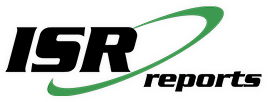Sponsors and CROs agree that integrating statistical modeling and knowledge of past performance into feasibility analyses improves accuracy of results

Informing the pharmaceutical drug development, manufacturing and commercialization industry.
A new report, Best Practices in Study Feasibility, from Industry Standard Research (ISR) reveals insights into how to successfully navigate many of the challenges - medical, clinical, logistical and regulatory - associated with establishing the feasibility of a clinical trial. A key area of interest for readers of the report will be the "Top Techniques and Innovations" for conducting feasibility analyses, where both sponsors and CROs report that the integration of statistical modeling and past performance into feasibility analyses is the number one technique positively affeccting the industry right now.
"ISR surveyed stakeholders from sponsors, CROs and sites to gain insight into feasibility analyses, and with the degree of differences between these groups on objectives and approaches for conducting a feasibility analysis, it is somewhat surprising to see the same concept mentioned as a top technique or innovation from both sponsors and CROs," explained Kate Hammeke, Vice President of Market Research at ISR.
In addition to findings on the top techniques and innovations used when conducting a feasibility analysis, respondents also shared their awareness of feasibility analysis service providers and frequency of use, the percentage of trials that require a feasibility analysis, whether the analysis is conducted in-house or outsourced, the data sources utilized and a ranking of which data sources contribute to the accuracy of the estimate. The report includes key statistics on the characteristics that comprise a predictive feasibility estimate, impressions on the industry's approach to feasibility analysis and the use of SOPs (standard operating procedures) and the accuracy of the estimations received from CROs, sites and specialized feasibility analysis firms as well as the potential value to be gained by engaging a specialized feasibility analysis firm under specific circumstances.
Both sponsors and CROs shared feedback on their experiences working with 23 different specialized feasibility analysis firms,
Related News
-
News Patients vs Pharma – who will the Inflation Reduction Act affect the most?
The Inflation Reduction Act brought in by the Biden administration in 2022 aims to give better and more equitable access to healthcare in the USA. However, pharma companies are now concerned about the other potential costs of such legislation. -
News CPHI Podcast Series: What does the changing US Pharma market mean for industry and patients alike?
In this week's episode of the CPHI Podcast Series Lucy Chard, Digital Editor for CPHI Online is joined by James Manser to discuss the political and market changes in the US pharma field. -
News CPHI Barcelona Annual Report illuminates industry trends for 2024
The CPHI Annual Survey comes into it’s 7th year to report on the predicted trends for 2024. Over 250 pharma executives were asked 35 questions, with their answers informing the industry landscape for the next year, spanning all major pharma marke... -
News Which 10 drugs are open to price negotiation with Medicare in the USA?
The Centres for Medicare & Medicaid Services, under the Biden administration in the USA, has released a list of the 10 drugs that will be open to price negotiations as part of the new legislation under the Inflation Reduction Act (IRA). -
News EU Medical Devices Regulation causes unintended disappearances of medical devices for children, doctors state
Doctor groups and associations have appealed to the EU to correct the EU Medical Devices Regulation law that may cause unintended shortages of essential drug and medical devices for children and rare disease patients. -
News 10 Major Drug Approvals So Far in 2023
Last year, 37 novel drugs were approved by the FDA, this was a high number for such a category, and covered many fields including oncology, demonstrating how promising further research is, and how it is only continuing to build. To date, there are alre... -
News Detecting Alzheimer's disease with a simple lateral flow test
A novel rapid diagnostic test for early-stage Alzheimer's disease has been developed using a biomarker binder from Aptamer Group along with technology from Neuro-Bio, the neurodegenerative disease experts. -
News CPHI Podcast Series: outsourcing and manufacturing trends
Listen to the CPHI Podcast Series this June to hear Gil Roth of the PBOA speak with Digital Editor Lucy Chard about the biggest trends and topics to watch in pharma outsourcing and manufacturing at the minute.
Position your company at the heart of the global Pharma industry with a CPHI Online membership
-
Your products and solutions visible to thousands of visitors within the largest Pharma marketplace
-
Generate high-quality, engaged leads for your business, all year round
-
Promote your business as the industry’s thought-leader by hosting your reports, brochures and videos within your profile
-
Your company’s profile boosted at all participating CPHI events
-
An easy-to-use platform with a detailed dashboard showing your leads and performance







